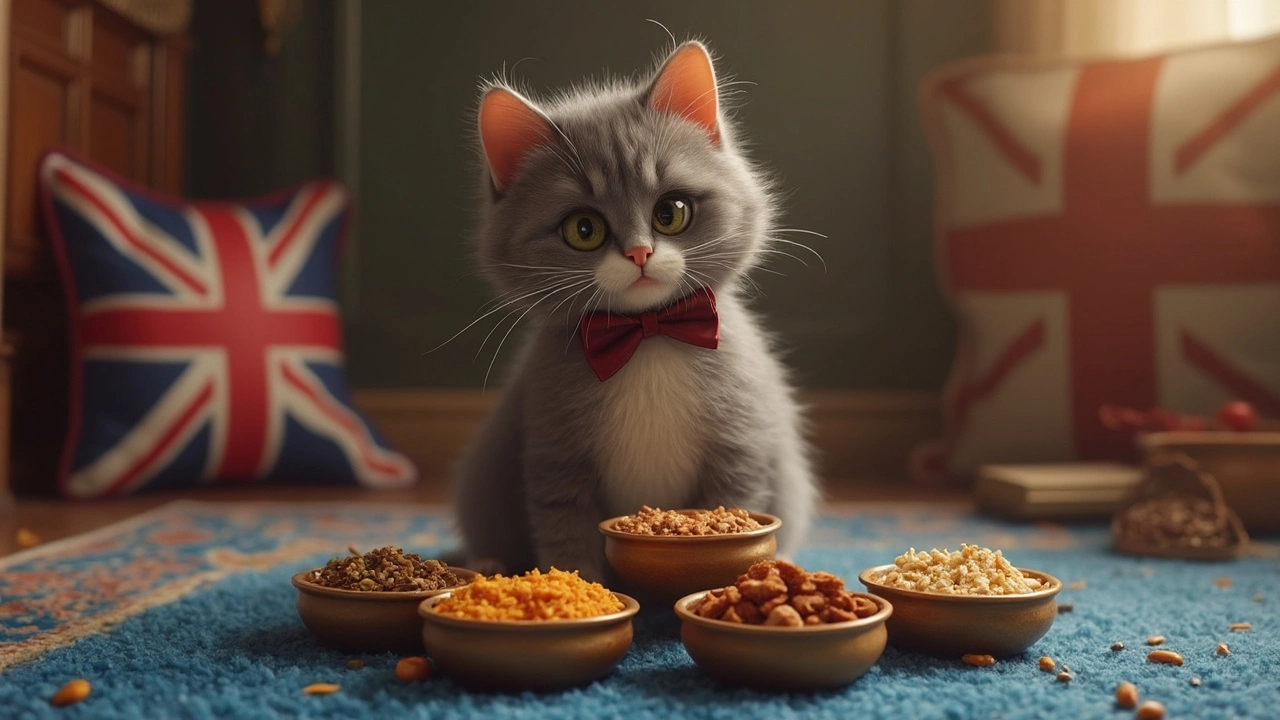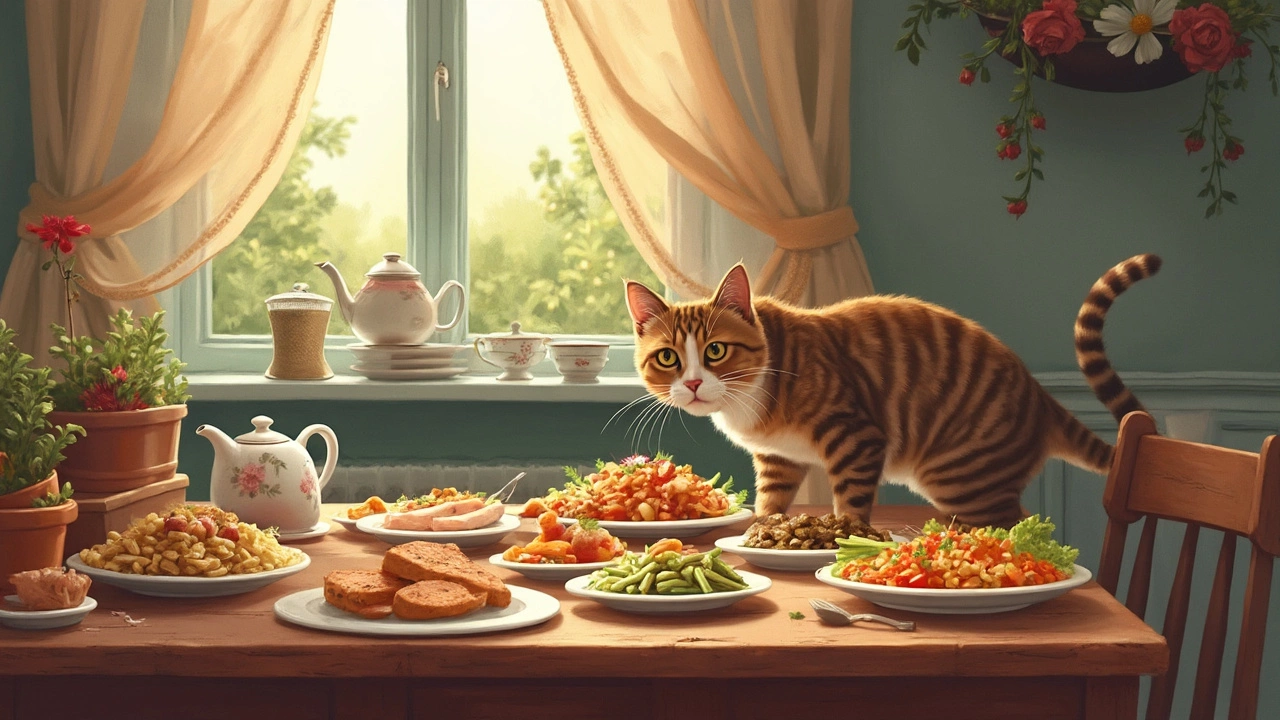Ever wondered if your cat is secretly yearning for a new flavor at meal times? It turns out, just like us, cats can get a bit tired of the same old kibble or canned food day in and day out. While some cats happily chow down on their usual meals, others might start ignoring the food bowl in search of something more enticing.
So, what can you do about it? A good first step is to pay attention to your furry friend's eating habits. If they're not as eager at meal times or they’re taking their time to finish meals, it might be a hint they're ready for something different. But, don't just switch things up on a whim. Sudden changes in diet can upset a cat's stomach.
It's all about balance. You want to spice things up a bit but in a way that's healthy. Mixing new flavors or textures gradually can keep their diet interesting without causing digestive issues. Think of it like sneaking in a new band to the middle of your favorite playlist. Your cat might appreciate a new taste, just not all at once. And hey, it's a great way to show your cat some love.
- Do Cats Really Get Bored?
- Signs Your Cat Needs a Change
- Best Practices for Meal Variety
- Balancing Nutrition and Taste
Do Cats Really Get Bored?
So, what's the deal with cats and boredom when it comes to food? While cats are often seen as creatures of habit, it might surprise you that cat food boredom is actually a thing. Cats do have taste preferences and over time, some might start to find their regular meal a bit dull. But don’t worry, it’s not that they’re becoming picky for no reason.
One thing to consider is that cats in the wild naturally get a variety of flavors in their diet—mice, birds, the occasional bug buffet. Quite different from the monotony of the same kibble, right? This instinct for variety can sometimes spill over into your home, making mealtime a predictable affair that can get a bit blah for your feline.
What Science Says About Cat Tastes
Interestingly, studies have shown that cats might not be driven by taste alone. They're also influenced by texture and smell, which means even if the feline boredom sets in, a new texture or aroma could make a big difference.
Also, while some owners feel their cats are demanding food snobs, it could just be their way of seeking diversity or even nutritional adequacy. It's like they have their own little menu standards that they’re trying to meet.
Evidence of Cat Food Boredom
You might find your cat sniffing their bowl and just walking away, or maybe they’ve started stealing bites from your plate. These could be signs they're over the current food gig and are ready to explore other tastes. It's not always about being finicky—it could be them voicing they need more interesting pet nutrition options.
It's worth mentioning that constantly swapping foods can lead to its own challenges like digestive issues. That’s why it’s a good idea to make changes gradual and monitor how your feline reacts.
Learning what your cat prefers can take a bit of time, but a bit of patience and observation goes a long way in keeping your furry friend happy and healthy.
Signs Your Cat Needs a Change
Noticing when your cat is yawning at its food can be tricky, but a few signs suggest it's time to mix things up. Cats are known for their finicky eating habits, so any sudden changes in behavior around meal times can be a hint.
Eating Less or Not Eating
If your cat is leaving more food in the bowl than usual or skipping meals, it might be bored with the same old menu. A loss of appetite isn't just a sign of boredom, though—it could mean health issues, so be sure to check other symptoms.
Begging for People Food
Is your kitty more interested in what’s on your plate rather than what's in its own bowl? This could be a sign that your furry friend is craving some new tastes. Just remember, not all human foods are safe for cats!
Weight Changes
Sudden weight gain or loss can be a sign your pet is either overeating due to disinterest (i.e., looking for treats instead) or not eating enough because their current diet is snooze-worthy. Keep an eye on this to maintain a healthy balance.
Lack of Energy
Cats who lose their zest for playtime or seem more lethargic may not be getting the right nutrients or stimulation from their meals. A switch-up could rekindle their energy levels.
Table: Average Nutrient Requirements for Adult Cats
| Nutrient | Recommended Daily Intake |
|---|---|
| Protein | 25-30g |
| Fat | 8-15g |
| Fiber | 5-10g |
If you spot any of these signs, it might be time to introduce a bit of variety. Check with a vet if you’re unsure, especially if there’s a concern about your cat's health. Trying new cat food textures or flavors. Just make sure you transition slowly to avoid any tummy troubles.

Best Practices for Meal Variety
Mixing it up for your cat's meals can be a fun exercise in creativity. But before you swap out their regular dish for something new, let's get into how to do it right. You simply don’t want to stress-pour all the cat food changes overnight.
Introduce New Tastes Gradually
Start by adding a small portion of the new food to their existing food. Think of it like sprinkling a bit of spice onto your dinner instead of replacing the whole meal. Over time, increase the amount of new food while decreasing the old.
Mind the Nutrition
Not all cat food is created equal. Make sure the new diet still meets their nutritional needs. The key is to look for high-quality food that's rich in protein, as that's crucial for your feline's health. Mixing wet and dry food can also offer variety while ensuring hydration and dental care.
Rotate Flavors
Think about having a rotation of flavors. Cats can appreciate some chicken one week, then be delighted with salmon the next. If you use commercial cat food, check if your favorite brand offers a variety of flavors in the same formulation to ensure dietary balance.
Consider Homemade as a Treat
Sometimes adding a bit of homemade touch can excite your kitty. Cooked chicken or small amounts of fish can be a delightful treat. Just ensure not to use any seasoning or onions, and always consult your vet about safe quantities.
| Option | Frequency |
|---|---|
| Homemade Treats (e.g. cooked chicken) | 1-2 times a week |
| Flavor Rotation | Every 1-2 weeks |
Following these guidelines can keep your cat's meals exciting without compromising on nutrition. This way, their dinner time becomes a highlight of their day, not just a routine chore.
Balancing Nutrition and Taste
Okay, so you've figured out that your kitty might need a shake-up in their diet. But how do you do that without messing with the important stuff, like nutrition? Cats are obligate carnivores, which means their food should still be mostly meat-based.
Why Nutrition Matters
A cat's diet needs crucial nutrients, such as taurine, which is essential for heart and eye health. This isn't the stuff you find in every food, so keeping an eye on what’s in the bowl is super important. According to Dr. Jane Robertson, a vet specializing in feline health, "A balanced diet is paramount for cats to maintain their energy and overall health."
Adding Variety Without Sacrificing Health
You don’t have to swap out an entire meal plan to keep your feline happy. Start by introducing a bit of variety with their cat food. Consider offering a different flavor of the same brand, or mix a bit of wet food with dry food to change the texture. Remember, small changes can go a long way.
Practical Tips for Meal Changes
- Introduce new foods gradually over several days, mixing it with their old food to let their digestive system adjust.
- Opt for high-quality brands that focus on balanced pet nutrition to ensure all nutritional needs are met.
- Watch for any signs of allergies or upset tummies, like vomiting or diarrhea, when adding variety.
And here’s a little stat to chew on: According to a pet nutrition survey, 70% of cats showed increased appetite and satisfaction when their meals included variety in flavor and texture.
Final Call for Balance
Balance is key. While it's great to keep your cat interested in their meals, you don't want to stray too far from a diet that's good for them. Monitor their health, keep an eye on their weight, and consult with your vet for the best approach to keep your cat happy and healthy.
